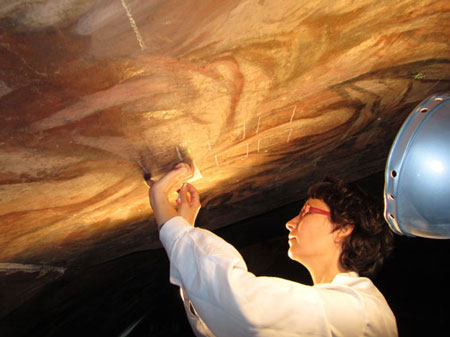Next in my ongoing series of posts related to beneficial microbes in the built environment… using Pseudomonas to restore 17th century Italian frescoes.
Apparently these particular frescoes were improperly restored in the 1960’s using some kind of gelatin glue that now causes salt crystals to grow on the art. Both chemical and mechanical removal methods are time-consuming and difficult with the former also leaving toxic byproducts.
The bacteria go in, do their thing, and then die. Pretty neat.

Nice find David. I really like the sentence “They have shown that a certain type of micro-organism is capable of cleaning works of art in a fast, specific and respectful way as well as being non-toxic for the restorer or the environment.” The bacteria cleans in a respectful manner …